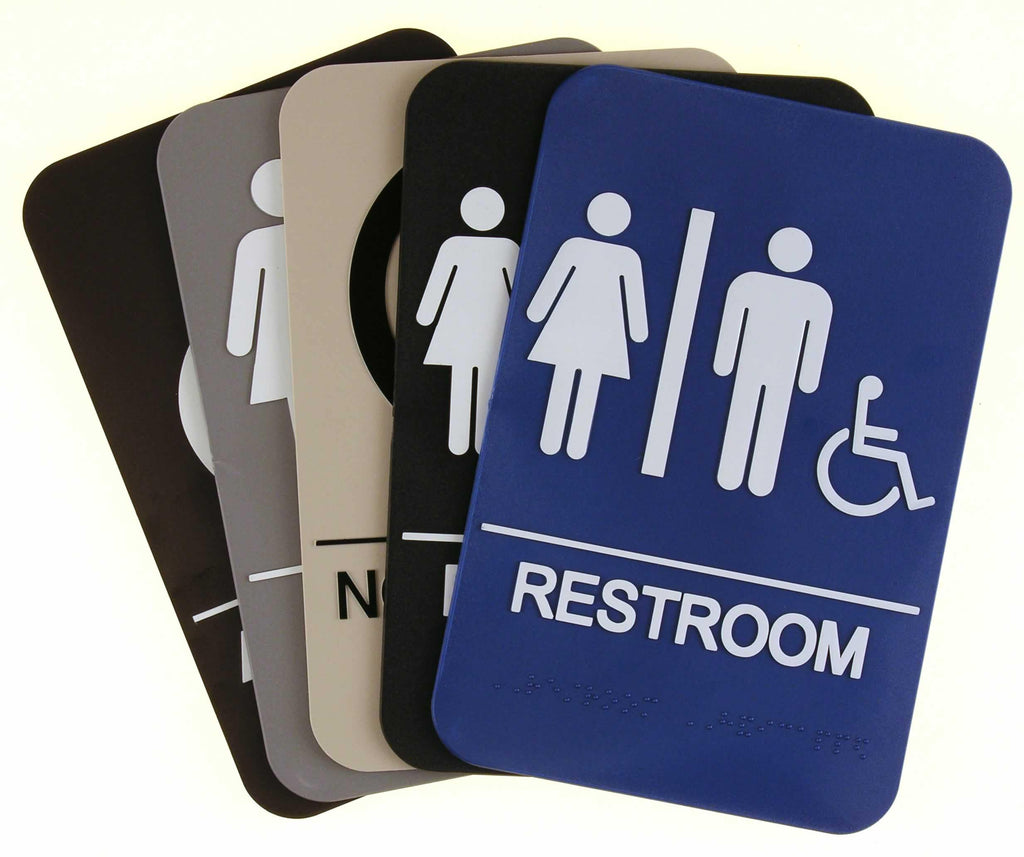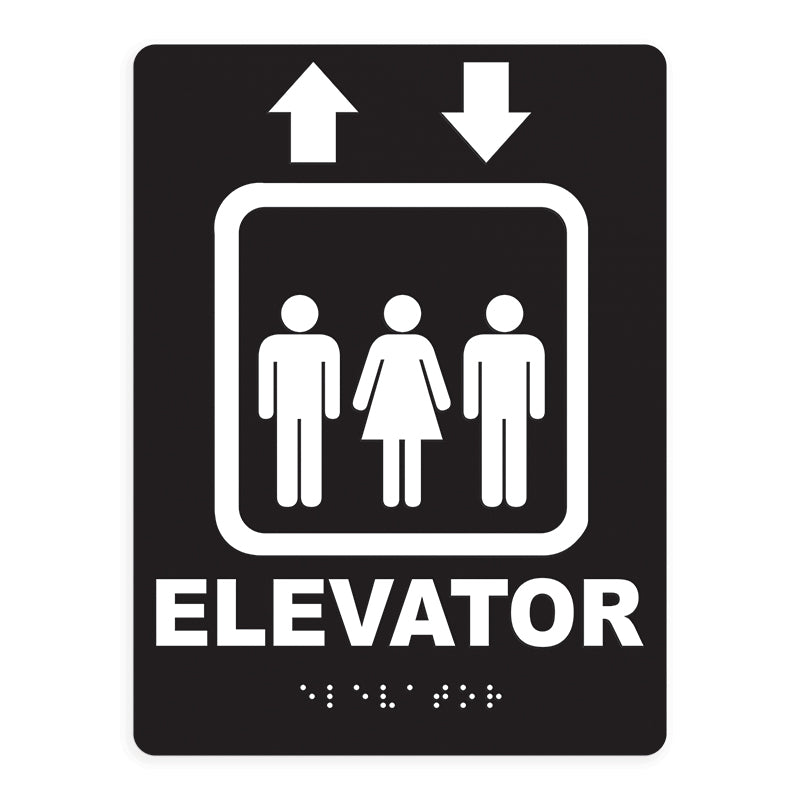Understanding the Regulations Behind ADA Signs
Understanding the Regulations Behind ADA Signs
Blog Article
Exploring the Trick Functions of ADA Signs for Improved Access
In the realm of ease of access, ADA indicators offer as silent yet effective allies, ensuring that rooms are comprehensive and navigable for individuals with disabilities. By integrating Braille and responsive aspects, these indications break obstacles for the visually impaired, while high-contrast color schemes and legible fonts provide to diverse aesthetic demands.
Value of ADA Compliance
Making certain conformity with the Americans with Disabilities Act (ADA) is vital for cultivating inclusivity and equal access in public rooms and offices. The ADA, passed in 1990, mandates that all public centers, employers, and transport solutions accommodate individuals with disabilities, ensuring they delight in the exact same civil liberties and opportunities as others. Compliance with ADA requirements not only meets legal obligations however additionally improves an organization's online reputation by showing its dedication to variety and inclusivity.
Among the vital aspects of ADA compliance is the implementation of available signs. ADA indicators are designed to ensure that people with disabilities can easily browse via areas and structures. These signs should abide by details guidelines regarding size, font, color contrast, and placement to guarantee presence and readability for all. Correctly applied ADA signs aids eliminate barriers that individuals with disabilities frequently run into, thereby promoting their freedom and confidence (ADA Signs).
In addition, adhering to ADA policies can alleviate the danger of lawful consequences and potential fines. Organizations that fail to adhere to ADA standards may encounter legal actions or fines, which can be both destructive and financially difficult to their public photo. Hence, ADA compliance is essential to cultivating a fair setting for every person.
Braille and Tactile Aspects
The incorporation of Braille and tactile elements right into ADA signs personifies the principles of availability and inclusivity. These functions are essential for people that are visually impaired or blind, enabling them to navigate public areas with higher freedom and self-confidence. Braille, a responsive writing system, is important in providing created info in a style that can be easily viewed through touch. It is normally put under the corresponding text on signage to make sure that individuals can access the information without visual aid.
Responsive components expand beyond Braille and include raised characters and icons. These components are created to be noticeable by touch, enabling people to recognize area numbers, bathrooms, departures, and various other vital locations. The ADA establishes particular standards relating to the dimension, spacing, and positioning of these tactile elements to optimize readability and guarantee uniformity throughout different environments.

High-Contrast Shade Plans
High-contrast color pattern play a critical function in enhancing the exposure and readability of ADA signage for individuals with visual disabilities. These schemes are necessary as they take full advantage of the distinction in light reflectance in between text and history, making sure that indicators are quickly noticeable, even from a distance. The Americans with Disabilities Act (ADA) mandates using specific shade contrasts to suit those with minimal vision, making it a vital aspect of conformity.
The effectiveness of high-contrast colors hinges on their capability to stand out in various illumination conditions, consisting of poorly lit atmospheres and locations with glow. Typically, dark text on a light background or light message on a read the full info here dark history is used to accomplish optimal contrast. For example, black message on a yellow or white background gives a plain aesthetic difference that assists in fast acknowledgment and comprehension.

Legible Fonts and Text Dimension
When taking into consideration the layout of ADA signage, the choice of legible typefaces and appropriate text dimension can not be overemphasized. These elements are essential for ensuring that signs are available to people with aesthetic disabilities. The Americans with Disabilities Act (ADA) mandates that fonts must be not italic and sans-serif, oblique, manuscript, extremely attractive, or of uncommon form. These needs aid ensure that the message is conveniently readable from a distance and that the personalities are distinct to varied audiences.
The size of the text likewise plays a crucial function in availability. According to ADA standards, the minimal message height should be 5/8 inch, and it must boost proportionally with checking out range. This is especially essential in public areas where signage demands to be read rapidly and accurately. Uniformity in text size adds to a cohesive aesthetic experience, aiding individuals in browsing environments effectively.
In addition, spacing between lines and letters is important to readability. Sufficient spacing avoids personalities from showing up crowded, enhancing readability. By sticking to these criteria, developers can substantially boost access, ensuring that signs offers its designated function for all individuals, no matter their aesthetic capacities.
Effective Placement Strategies
Strategic positioning of ADA signage is important for making best use of availability and making certain compliance with legal standards. ADA guidelines state that indicators must be placed at an elevation between 48 to 60 inches from the ground to ensure they are within the line of view for both standing and seated individuals.
Additionally, indications should be positioned nearby to the latch side of doors to allow easy identification before entrance. This positioning assists people situate areas and areas without blockage. In instances where there is no door, indications should be located on the nearest nearby wall surface. Uniformity in indicator placement throughout a facility enhances predictability, reducing confusion and enhancing overall user experience.

Verdict
ADA indicators play a crucial function in promoting availability by incorporating attributes that resolve the needs of people with handicaps. Including Braille and responsive aspects guarantees essential information is accessible to the visually damaged, while high-contrast color browse around this web-site systems and clear sans-serif font styles boost presence across various lights problems. Effective placement approaches, such as proper mounting heights and calculated places, better help with navigation. These aspects collectively cultivate an inclusive setting, highlighting the importance of ADA compliance in making sure equivalent accessibility for all.
In the realm of availability, ADA signs serve as quiet yet powerful allies, making certain that rooms are inclusive continue reading this and navigable for individuals with specials needs. The ADA, passed in 1990, mandates that all public facilities, companies, and transport services fit individuals with disabilities, ensuring they take pleasure in the same rights and opportunities as others. ADA Signs. ADA signs are designed to make certain that people with impairments can conveniently navigate through rooms and structures. ADA standards state that indicators must be placed at a height in between 48 to 60 inches from the ground to guarantee they are within the line of view for both standing and seated people.ADA signs play an essential role in advertising access by integrating functions that address the requirements of people with specials needs
Report this page